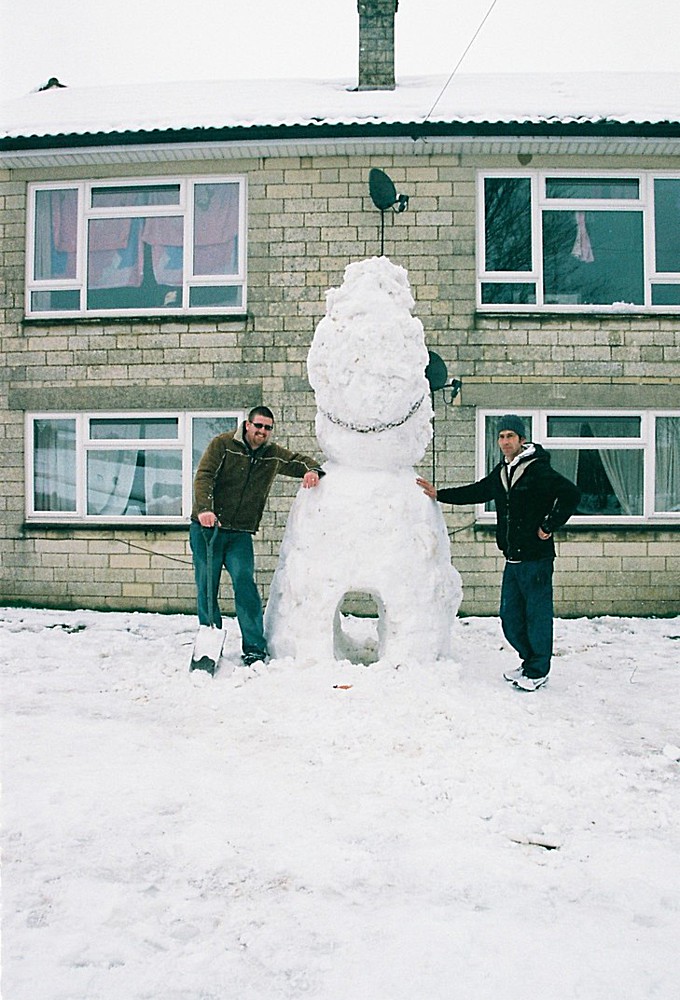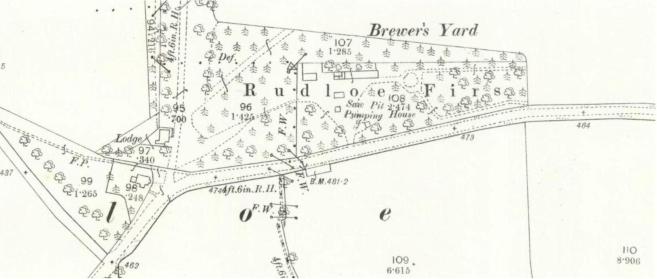Welcome to the Rudloe and environs website.
Here you will find news, articles and photos of an area that straddles the Cotswold Area of Outstanding Natural Beauty in north-west Wiltshire.
Contributions in the form of articles or photos are welcome. Even those with completely contrary views to mine!
Thanks to the website builder 1&1 and Rob Brown for the original idea.
Rudloescene now, in January 2014, has a sister, academic rather than anarchic, website about Box history here: http://www.boxpeopleandplaces.co.uk/
It contains thoroughly professional, well-researched articles about Box and its people.
Contact rudloescene through the 'Contact' page.

True to form (it seems) while I sent this article to the Parish Mag editor on Friday, 11th September, I have had no acknowledgement or response so nil desperandum, let's publish now (15th September 2020) here. The reader may find the text and image clearer in the .pdf file at the foot of the webpage.
Rudloe Landscape, People and Politics
Part II(1) – People
(note that a Part II(2) is proposed, looking at World War II onwards)
Most will not be familiar with Roman, Medieval and Renaissance Rudloe, the last of which has quite a ring to it – Renaissance Rudloe - but it is a term recently corrupted and reversed by the
GreenSquare Housing Association. Roman Rudloe? Of course – SPQR – Senatus Populusque Rudloe – the Senate and People of Rudloe, all of which history is lost so let’s start with the Medieval and Rudloe
Manor.
Thanks to research undertaken by Rudloeite Sqn Ldr Welch, we find that Rudloe Manor estate dates from the 13th century and the reign of Henry III. A deed made by Bartholomew Bigod of Box
gave the estate of Ryddelaw to Monkton Farleigh Priory and Rudloe Manor was first owned by the Beauplan family (French!). Ownership then passed through John Bishop (14th century), the Baldwin family and Thomas Tropenell (15th century), the Leversegge family (16th century) and thence to Sir Edward Hungerford (see
http://www.boxpeopleandplaces.co.uk/rudloe.html), Richard Kent and the Goddard and Duckett families in the 17th century. From Historic England, we find that the manor house itself dates from the late 17th century (‘Manor recorded from early C13. Interior altered. House probably
built c1685 for T. Goddard’).
The manor passed to Jacob Selfe of Melksham in 1700 whose family intermarried with the Methuens. In 1870, Lord Methuen sold the estate and manor to
Thomas Poynder and from an indenture of 1889, we find that Thomas Poynder (Baron and Lord Islington) of Hartham Park had a vast land and property portfolio which included many pubs: the White Hart at
Kington St Michael, the Roebuck at Easton, the Great Western, the Falcon at Wootton-under-Edge, the Chequers (between Chippenham and Corsham) and the Spread Eagle at Pickwick. The estate, now
including Rudloe Manor, would eventually pass to John Dickson-Poynder (MP for Chippenham and Governor of New Zealand between 1910 and 1912) who then, in 1918, sold Rudloe Manor to Felix Brunner (a
one-time Liberal Party candidate for Chippenham and, latterly, president of the Liberal Party and chairman of the Open Spaces Society). Between the wars, the manor passed to Countess Pappenheim, the
American widow of a German count, thence to her daughter Countess Raben who, apparently, ‘sold’ it to the Air Ministry in 1940 to house RAF No 10 Group Headquarters (1940 is significant as it is
rumoured that, being of German ancestry, Countess Raben ‘disappeared’ to Denmark or Ireland or was interned and the estate was the subject of a compulsory purchase order).
Names of former owners are reflected in the names of the detached houses in the new, ‘executive’ Bybrook View development in the manor grounds; these are Leversegge House, Beauplan House and Raben
House.
Moving back to the 19th century, members of the quarry-owning Pictor family were living at Boxfields Farm (Rudloe House since the late 19th century - ref 1885 OS map) in Leafy
Lane in the 1860s, Robert Pictor was head of the household of wife and ten children. The family was to live here until 1932 when through a complex series of conveyances, the house and associated
lands (now the Leafy Lane housing estates and Leafy Lane playing fields) passed to the Padfield family (now of Park Farm, Kelston and the Bath Soft Cheese Company). On the demise of Mr Padfield in
1959, his wife, son and daughter-in-law continued farming until 1965 when the house and surrounding land (to the east of Leafy Lane) were sold to Kivel Properties who gained development permission
and used Rudloe House as a site office. In 1967 Kivel, in liquidation, sold the house to local builder David Bevan and the land, in two parts, to local firm Smith and Lacy and national company
Marples Ridgeway. The house then passed through owners Peter Imeson (1978-82) and Philip and Jean Wooster (1982-95) to its present owner Janice Riches.
Robert Pictor reappears with another Leafy Lane property, Rudloe Towers (grade II listed), built in the 1870s and since known as Rudloe College (ref 1885 OS map), Rudloe Park Hotel, Rudloe Hall Hotel
and since September 2013, courtesy of Marco Pierre White, Rudloe Arms. Robert died in 1877 following a stroke when walking between Boxfields Farm and the unfinished Rudloe Towers. It is believed
that, on completion, Rudloe Towers was sold but the relevant papers, including deeds, were lost in a fire at the solicitor’s office so late 19th- and early 20th-century
ownership is shrouded in mystery. In the 1960s and 70s, when Rudloe Park Hotel was a thriving ‘local', the owners were firstly Major Ferguson and then Ian Overend who moved on to The Duke at
Bratton.
Now, let’s look at the ‘Brewer Family of Rudloe’ (see: http://www.boxpeopleandplaces.co.uk/brewer-family.html), quarrymasters who apparently lived (and
established Brewer’s Yard quarry) at Rudloe Firs on the brow of Box Hill. Whilst there are references to this family, for example “How on earth did an ordinary Rudloe boy become involved in the
conspiracy?” in Box People and Places (http://www.boxpeopleandplaces.co.uk/more-brewer-family.html) , the rudloescene website (https://www.rudloescene.co.uk/history/) and now
in two recently-published Kindle books, The Strange Journey of Humphries Brewer, the location of their house is unknown. In the second part of ‘The Strange Journey ...’, we find the
following: “... William Jones Brewer of Rudloe”, “Thank heaven Julia is at Rudloe”, “Julia ... had chosen to return to Rudloe for her confinement”, “... even if it meant never seeing England, or
Rudloe, or his parents and brother and sister, Robert and Jane, ever again” and “... Julia, on 22nd October 1849, gave birth to her second daughter, Mary, again at Rudloe”.
So we will leave this first part of Rudloe People with the mystery of the whereabouts of the Brewer family home. In the ‘Brewer Family of Rudloe’ article, by Syd Hockey, mentioned above, we find the following regarding William Jones Brewer from the 1851 census: “He was living at Rudloe Firs with his wife Jane, children and one servant.” But where was the house?
Perhaps the house was the left-hand ‘block’ shown in the 1885 Ordnance Survey map above (courtesy of the National Library of Scotland - https://maps.nls.uk/index.html).
Thanks to Jean Wooster for the Pictor family and Rudloe House research
Part II(2) – People (from World War II onwards) to follow
Adobe Acrobat document [236.1 KB]

